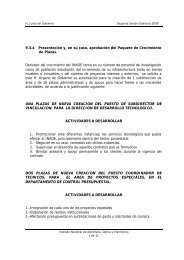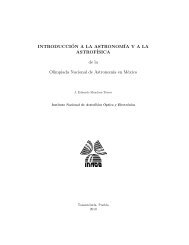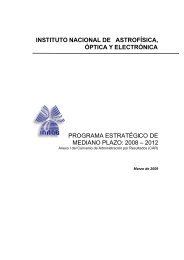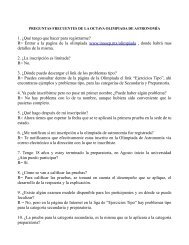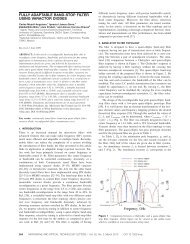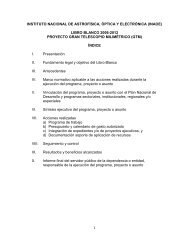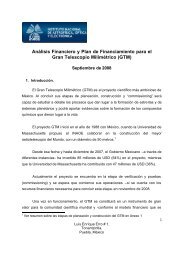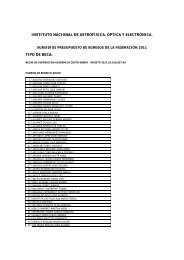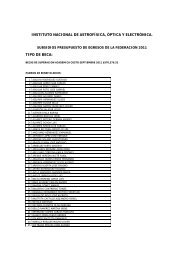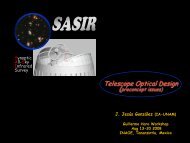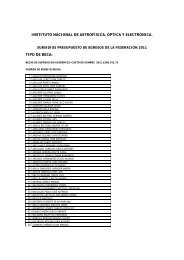Measurement of the stellar irradiance f - inaoe
Measurement of the stellar irradiance f - inaoe
Measurement of the stellar irradiance f - inaoe
You also want an ePaper? Increase the reach of your titles
YUMPU automatically turns print PDFs into web optimized ePapers that Google loves.
Extention <strong>of</strong> <strong>the</strong> spectral domain covered : UV<br />
no black body available on board<br />
(note: flux in <strong>the</strong> UV have been measured after <strong>the</strong> calibration <strong>of</strong> <strong>the</strong> space experiment before<br />
launch and/or combining <strong>stellar</strong> model atmosphere for some stars : e.g. IUE)<br />
→ based on model atmosphere <strong>of</strong> WD <strong>of</strong> nearly pure hydrogene<br />
atmosphere (featureless objects), tight on <strong>the</strong> Vega flux scale through <strong>the</strong><br />
V-mag in <strong>the</strong> visible (e.g. Bohlin, 2000, AJ, 120, 437)<br />
HST absolute spectrophotometry <strong>of</strong> Vega from 0.17 to 1.01 µm .<br />
(Bohlin & Gilliland, 2004, AJ, 127, 3508)<br />
Vega STIS observations calibrated with standard WD stars<br />
♦ good comparison with Hayes flux (standard lamps) in <strong>the</strong> visible<br />
♦ excellent agreement with <strong>the</strong> Kurucz (2003) model in <strong>the</strong> visible,<br />
http://hurucz.haward.edu/stars/vega<br />
♦ some discrepancies in <strong>the</strong> UV and in <strong>the</strong> Balmer lines region.



